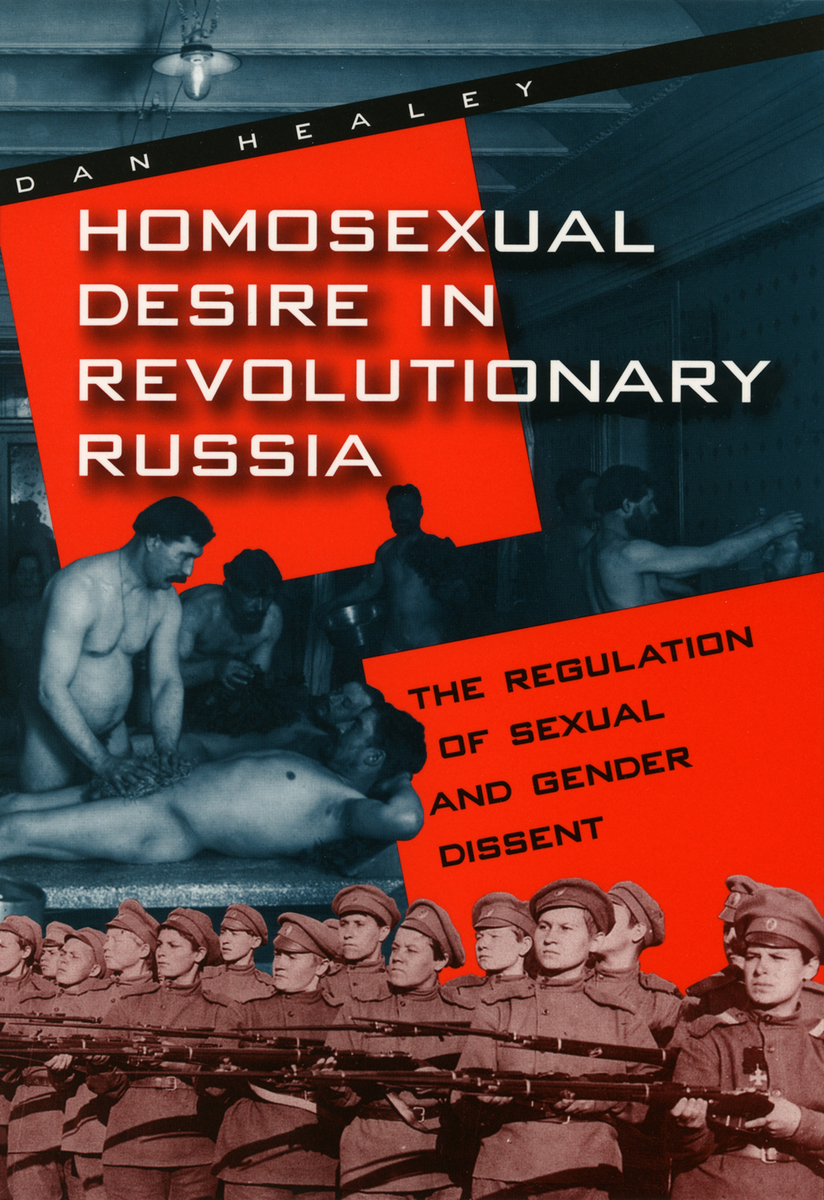Cloth: 978-0-226-32233-9 | Paper: 978-0-226-32234-6 | Electronic: 978-0-226-92254-6
DOI: 10.7208/chicago/9780226922546.001.0001
AVAILABLE FROM
University of Chicago Press (paper, ebook)Copia Interactive
ebrary
EBSCO eBooks (formerly NetLibrary)
Google Play
ABOUT THIS BOOK
AUTHOR BIOGRAPHY
TABLE OF CONTENTS
Plates
Tables
Acknowledgments
List of Abbreviations
Introduction
Part I. Same-Sex Eros in Modernizing Russia
1. Depravity’s Artel’ : Traditional Sex Between Men and the Emergence of a Homosexual Subculture
2. “Our Circle” : Sex Between Women in Modernizing Russia
Part II. Regulating Homosexual Desire in Revolutionary Russia
3. Euphemism and Discretion: Policing Sodomites and Tribades
4. The “Queer Subject” and the Language of Modernity: Reforming the Law on Same-Sex Love Before and After 1917
5. Perversion or Perversity? : Medicine, Politics, and the Regulation of Sex and Gender Dissent After Sodomy Decriminalization
6. “An Infinite Quantity of Intermediate Sexes”: The Transvestite and the Cultural Revolution
1. Hierarchies in the Russian bathhouse
2, 3, 4. Egorov Bathhouse, Kazachii Lane, St. Petersburg, ca. 1910
5. Nevskii Prospekt, St. Petersburg, ca. 1910
7. Cinizelli Circus, St. Petersburg, ca. 1914
8. Prince Feliks Iusupov and his family, 1901
12. The female homosexual A. P. in a skirt, Saratov, 1925
13. Advertisement for Spermokrin, late 1920s
15. A group of bachi, Samarkand, 1913
17. Bachi posing for a camera, Samarkand, 1913
18. Soviet Moscow’s cruising grounds: Nikitskie Gates Square, 1930
20. Soviet Moscow’s cruising grounds: Sverdlov Square, 1938
22. Inside the bathhouse: rows of benches, 1939
23. Inside the bathhouse: the washing chamber, 1932
24. Soviet transvestite, 1957
25, 26. Pathologized sexualities—a female homosexual and transvestite, ca. 1965
27, 28, 29, 30, 31. Pathologized sexualities—“female homosexuals,” ca. 1965
7. “Can a Homosexual Be a Member of the Communist Party?” : The Making of a Soviet Compulsory Heterosexuality
Part III. Homosexual Existence and Existing Socialism
8. “Caught Red-Handed" : Making Homosexuality Antisocial in Stalin's Courts
9. Epilogue: The Twin Crucibles of the Gulag and the Clinic
Conclusion
Appendix: How Many Victims of the Antisodomy Law?
1. Sodomy Convictions, 1934–50
2. Sodomy Convictions in USSR and RSFSR, 1961–81
3. Sodomy Convictions, 1987–91
Notes
Bibliography
Index
